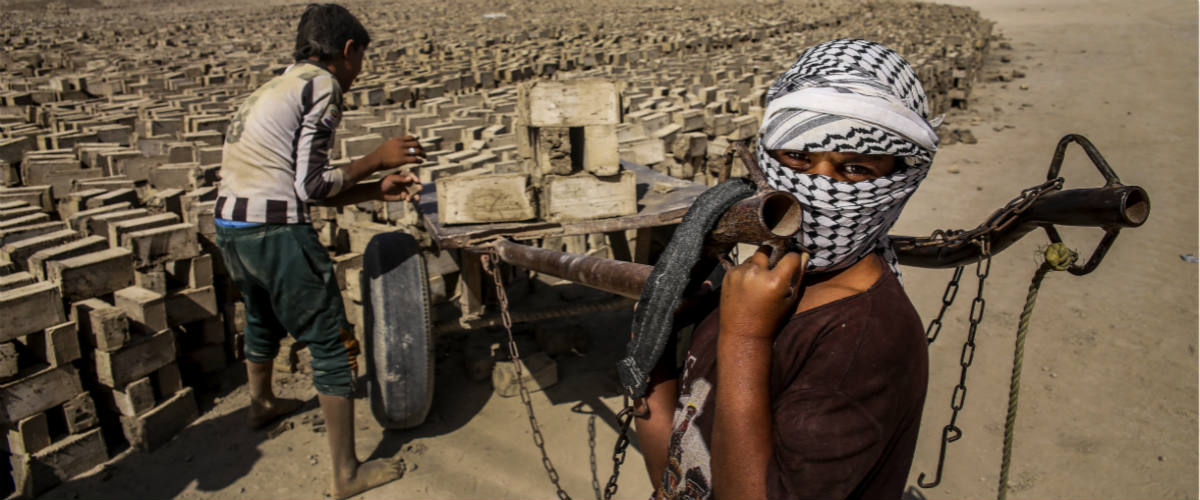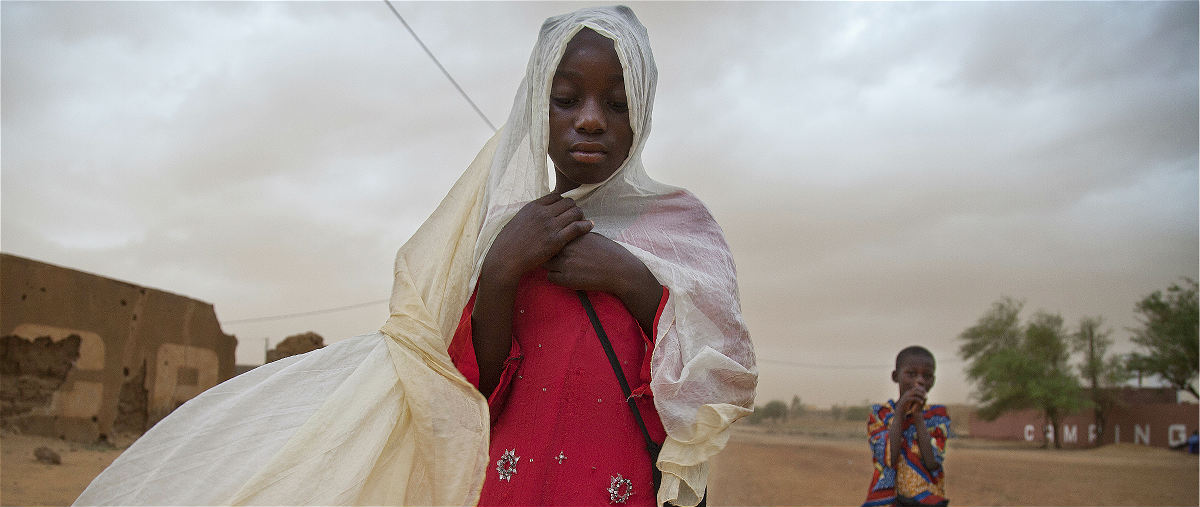
The International Labour Organization (ILO) launched the World Day Against Child Labour in 2002 to focus attention on the global extent of child labour and the action and efforts needed to eliminate it. Each year on 12 June, the World Day brings together governments, employers and workers organizations, civil society, as well as millions of people from around the world to highlight the plight of child labourers and what can be done to help them.
“In conflicts and disasters, protect children from child labour”
Globally over 1.5 billion people live in countries that are affected by conflict, violence and fragility. At the same time, around 200 million people are affected by disasters every year. A third of them are children. A significant proportion of the 168 million children engaged in child labour live in areas affected by conflict and disaster. The 2017 World Day Against Child Labour focuses on the impact of conflicts and disasters on child labour.
Conflicts and disasters have a devastating impact on people’s lives. They kill, maim, injure, force people to flee their homes, destroy livelihoods, push people into poverty and starvation and trap people in situations where their basic human rights are violated. Children are often the first to suffer as schools are destroyed and basic services are disrupted. Many children are internally displaced or become refugees in other countries, and are particularly vulnerable to trafficking and child labour. Ultimately, millions of children are pushed into child labour by conflicts and disasters.
Urgent action is needed to tackle child labour in areas affected by conflict and disaster. If the SDG Target 8.7 which aims to “eradicate forced labour, end modern slavery and human trafficking and secure the prohibition and elimination of the worst forms of child labour” is to be achieved by 2030, we need to intensify and accelerate action to end child labour, including in areas affected by conflict and disasters. And we need to do it together.
What is meant by child labour?
Child labour is work carried out to the detriment and endangerment of a child, in violation of international law and national legislation. It either deprives children of schooling or requires them to assume the dual burden of schooling and work. Child labour to be eliminated is a subset of children in employment. It includes:
- All “unconditional” worst forms of child labour, such as slavery or practices similar to slavery, the use of a child for prostitution or for illicit activities;
- Work done by children under the minimum legal age for that type of work, as defined by national legislation in accordance with international standards.
Child Labour
Today, it is estimated some 168 million children remain trapped in child labour, many of them work full-time. Today, throughout the world, around 215 million children work, many full-time. They do not go to school and have little or no time to play. Many do not receive proper nutrition or care. They are denied the chance to be children. More than half of them are exposed to the worst forms of child labour such as work in hazardous environments, slavery, or other forms of forced labour, illicit activities including drug trafficking and prostitution, as well as involvement in armed conflict.
Guided by the principles enshrined in ILO’s Minimum Age Convention No. 138 and the Worst Forms of Child Labour Convention No. 182, the ILO Programme on Child Labour (IPEC) works to achieve the effective abolition of child labour.
Labour Standards
One of the major aims set for the International Labour Organization (ILO) at its founding in 1919 was the abolition of child labour. Historically, the ILO’s principal tool in pursuing the goal of effective abolition of child labour has been the adoption and supervision of labour standards that embody the concept of a minimum age for admission to employment or work. Furthermore, from 1919 onwards the principle that minimum age standards should be linked to schooling has been part of the ILO’s tradition in standard setting in this area. Convention No. 138 provides that the minimum age for admission to employment shall not be less than the age of completion of compulsory schooling.
The ILO’s adoption of Convention No. 182 in 1999 consolidated the global consensus on child labour elimination. It provided much-needed focus without abandoning the overarching goal, expressed in Convention No. 138, of the effective abolition of child labour. Moreover, the concept of the worst forms helps set priorities and can be used as an entry point in tackling the mainstream child labour problem. The concept also helps to direct attention to the impact of work on children, as well as the work they perform.
Child labour that is proscribed under international law falls into three categories:
- The unconditional worst forms of child labour, which are internationally defined as slavery, trafficking, debt bondage and other forms of forced labour, forced recruitment of children for use in armed conflict, prostitution and pornography, and illicit activities.
- Labour performed by a child who is under the minimum age specified for that kind of work (as defined by national legislation, in accordance with accepted international standards), and that is thus likely to impede the child’s education and full development.
- Labour that jeopardizes the physical, mental or moral well-being of a child, either because of its nature or because of the conditions in which it is carried out, known as “hazardous work”.
Social partners tackling child labour
There are good examples of trade unions and employers’ organizations playing a key role in the elimination of child labour in the rural sector.
- In India for example, in Tamil Nadu and Madhya Pradesh, trade unions and their recently organized rural members are implementing the concept of child labour-free villages through dialogue with local leaders and employers. Many collective agreements are being concluded targeting child labour.
- Similarly, the Federation of Uganda Employers has set up child labour monitoring committees at the local level, including in the coffee, tea, rice and sugar sectors.
- Collaboration and alliances are also being formed between trade unions and representative organizations of indigenous people, especially in Latin America. In some countries this has led to the inclusion of indigenous organizations in national committees on the prevention and elimination of child labour.

Action
SDGs and the elimination of child labour
The Sustainable Development Goals adopted by the world leaders in 2015 (Target 8.7) calls on all to take immediate and effective measures to eradicate forced labour, end modern slavery and human trafficking and secure the prohibition and elimination of all forms of child labour by 2025 as an essential step to achieving decent work for all, full and productive employment and inclusive and sustained economic growth.
ILO action on the abolition of child labour has intensified over the last four years and significant advances have been made since the first Global Report on the subject. The challenge over the next four years will be for the ILO to work in a more focused and strategic way to act as the catalyst of a re-energized global alliance in support of national action to abolish child labour. This transformation in approach to global leadership will ensure that the ILO will contribute more effectively to consigning child labour to history.
The ILO promotes specific action on the following fronts:
- Universal ratification of the ILO child labour Conventions and all the ILO core Conventions.
- Ensuring a new focus on national policies and programmes to promote an integrated approach to all fundamental principles and rights at work.
- Broadening integrated area based approaches to tackle the root causes of child labour.
- Aligning the minimum age for admission to employment and the age for completion of compulsory schooling.
- Strengthening workplace safety and health for all workers, but with specific safeguards for children between the minimum age for admission to employment and the age of 18 by preparing and/or updating hazardous child labour lists.
- Promoting and strengthening the functioning of institutions and mechanisms aimed at monitoring the effective application and enforcement of fundamental rights at work including protection against child labour, (courts, tribunals, magistrates, labour inspectors and child labour monitoring).
- Continuing development of advocacy and strategic partnerships at international, national and community level and promoting the worldwide movement against child labour.
- Replicating and expanding good practices that have produced sustainable results.

